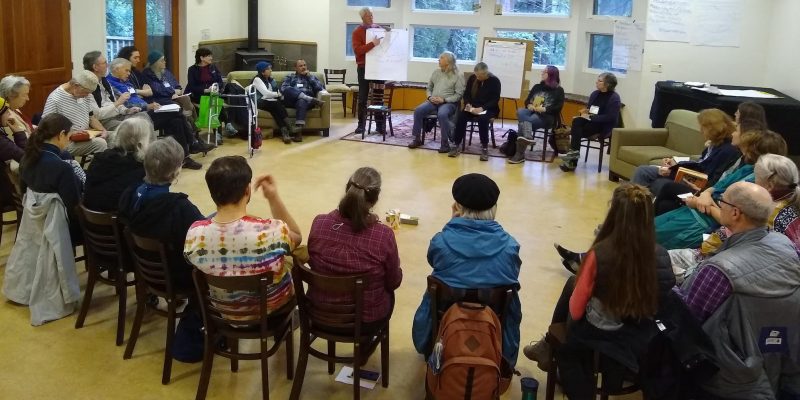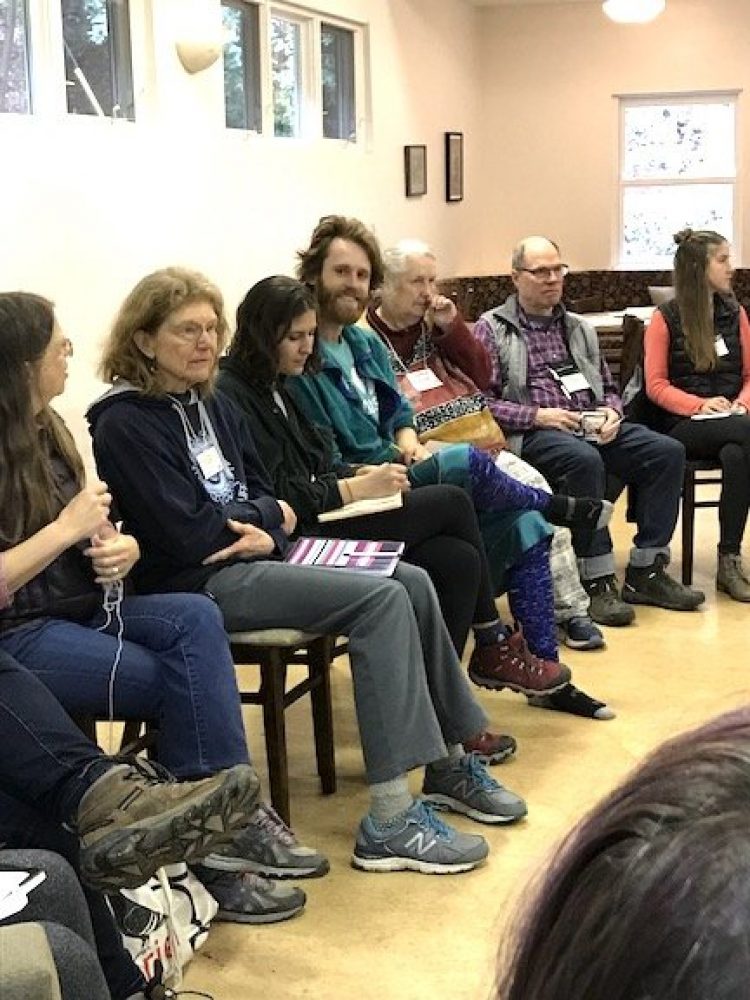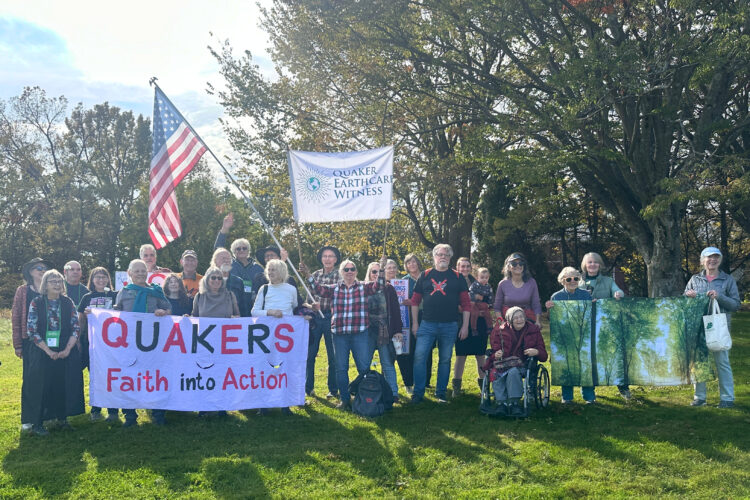Young and Old for Climate Justice

By Hayley Hathaway.
GEORGE LAKEY, lifelong civil rights activist, and Friend, hosted “Young and Old for Climate Justice: A Dialog” at Quaker Center in Ben Lomond, CA this January. Forty Friends, ages ranging from 15 to 80, joined the weekend-long retreat in the redwoods. Shelley Tanenbaum, QEW’s General Secretary, and I participated in the workshop as our own “young/old” team. As a group, we engaged in important work of deeply listening across the generations, remaining active and engaged alongside grief, and learning how we can build a more just future.
During the workshop, George shared lessons learned from his decades of experience building movements for social justice. He’s turned this knowledge into a practical and timely new book, How We Win: A Guide to Nonviolent Direct Action Campaigning. I’d like to share with you what I took from the weekend, guidance that I hope will inform my work as an activist with my local Sunrise Movement group and as part of my Quaker meeting’s Climate Action Group.
1. George invites us to embrace the volatility of current events and learn from the past. He has a provocative take on our era of political upheaval and climate chaos. “Aren’t we lucky?” he exclaims. While researching for his previous book, Viking Economics, he learned that polarization is correlated with economic inequality. We are living in such polarized times because the United States has exponentially concentrated wealth over the last few decades. So, what do we do?
George told us about a friend who creates metal sculptures. The artist heats up the metal to extreme temperatures to transform it into art. Without that heat, the metal can’t change, nothing transforms. “Progressives need polarization like blacksmiths and artists need heat to make cold hard metal flexible enough to change its shape,” says George. We can’t be afraid of that heat. We are “so lucky” to be alive right now because we can harness that heat to make real change.
And it’s been done before. In Viking Economics, George documents how “in Sweden and Norway, democratic socialist movements pushed their economic elites off their pedestals and invented the egalitarian Nordic economic model” in the 1920s and 30s. In the US, we can learn lessons from the organizing of the New Deal and the Civil Rights Movement. This is also an opportunity to listen to the stories of our elders.
2. Strategic nonviolent direct action campaigns are the way forward. While one-time protests are critical for motivating and energizing a group of people, a long-term campaign that focuses on a single entity, like a bank or a company, can give us a better chance at making change because it puts pressure directly on a point of power. It’s time to organize direct action that doesn’t necessarily mean civil disobedience, but it does mean activities (think: boycotts, strikes, sit-ins) that challenge a power holder through noninstitutional means and disrupts “business as usual.”

3. We must recognize our gifts and use them strategically. Activist and organizer Bill Moyer created a model to help us understand specific “roles of social activism.” While many of us have a wide range of skills, there are particular areas in which we know we excel. He categorizes them into four areas: Helper, Advocate, Organizer, Rebel. Rebels are energized by working outside the system; advocates use their persuasive skills to make their case to those in power using traditional means. Organizers work to get people to their events and make sure systems run smoothly; helper are the ones making sure everyone has what they need. Knowing what role makes you feel most comfortable can help you stay in the game (not get burnout), see where your movement thrives and needs support, and also provides a helpful framework to check your own biases toward certain types of change-makers. Which one are you? Are you being used well in your own community?
4. Tell visionary stories. To create a strong movement for social change, we must offer a vibrant picture of the future using heartfelt and relatable stories. For too long, we have been reacting to a narrative controlled by the economic elite that lets them create the agenda for change. When we do respond, we respond using moralistic language and reasoning that doesn’t unite or inspire. We have an opportunity to imagine a different and better future. What does the world we want look like? Let’s dream about it, then motivate each other with our beautiful and powerful vision.
5. Share across the generations. During our workshop, George organized a “Speak Out” where the young people shared our answers to the questions, “What’s awesome about being a young person today? What’s difficult? What do you want the older generations to know?” It was a powerful moment. We all know what it’s like to be young, yet we can also recognize that this is an especially difficult time to be growing up. Young Friends shared about their crushing anxiety around finances and climate change. This exercise could be used in other places to promote better understanding across generations. How does your meeting support working across the decades?
The workshop, and George’s new book, helped focus my perspective on what I can do as an individual activist and what we can do as a larger movement working in response to the climate crisis. Grounded in the strength of our faith and our traditions, I see the possibilities for intergenerational Quaker leadership. I left the workshop feeling energized and inspired.

